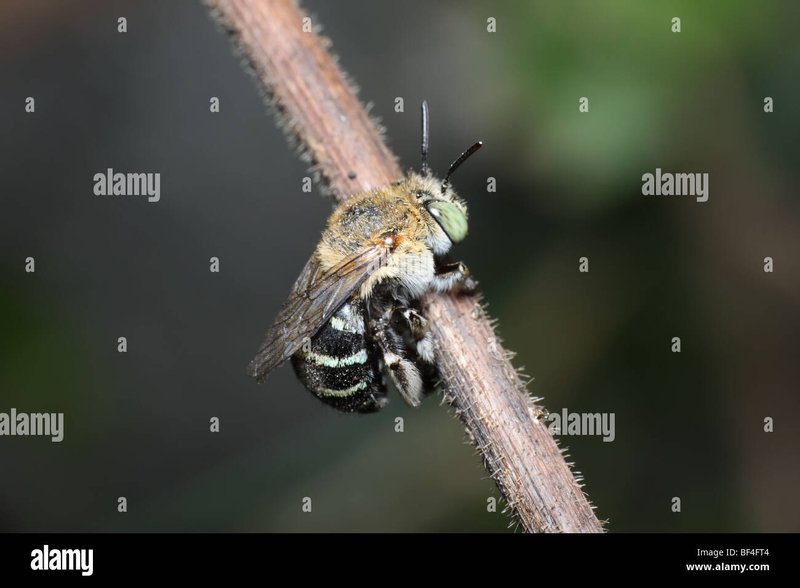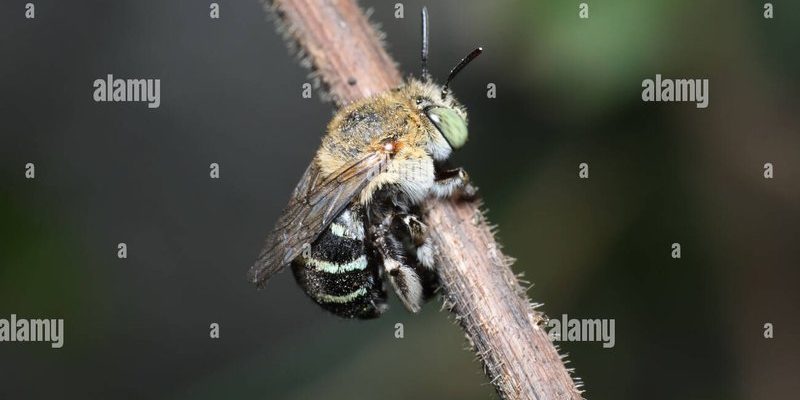
Think of the blue banded bee as the rock star of the bee world. With its trendy blue bands and a unique way of buzzing around flowers, it’s easy to see why they catch the eye. If you’re curious about how to identify these charming little pollinators, you’re in the right place. Let’s break it down step by step so you can confidently spot a blue banded bee the next time you’re out in nature.
What Are Blue Banded Bees?
Blue banded bees belong to the Amegilla genus and are native to Australia. They’re solitary bees, meaning they typically don’t live in hives like honeybees. Instead, these little guys prefer to burrow into the ground or find small crevices to create nests. What makes them so special is their unique appearance and impressive pollen-collecting skills.
These bees are about 12-14mm long, making them slightly smaller than your average honeybee. Their most distinctive feature is, of course, those shiny blue bands on their abdomen. The contrast of the deep black fur with bright blue stripes is quite the sight! They’re not just pretty; they’re also hardworking pollinators, helping various plants reproduce by transferring pollen during their foraging trips.
Now, you might be wondering what their habits are like. Blue banded bees are diurnal, meaning they’re active during the day, often buzzing around in the warmth of the sun. You’ll typically find them on flowering plants, where they perform a unique “buzz pollination” technique. This allows them to shake loose pollen from certain flowers more effectively than many other bee species.
Physical Traits of Blue Banded Bees
When it comes to identifying blue banded bees, their physical traits are your best friends. These striking bees have a few key features that set them apart from others. Let’s dive into what you should look for.
- Coloration: The blue bands are the standout feature. They are a brilliant turquoise blue, which can be hard to miss against their shiny black bodies.
- Size: As mentioned earlier, they’re about 12-14mm long, smaller than honeybees but not so tiny that you’ll struggle to spot them.
- Body Shape: They have a more robust, rounder body compared to some other bees. The body is covered in fine hairs that help collect pollen.
- Wings: Their wings are slightly clear with a hint of brown, often folded elegantly over their back when they’re resting.
Being aware of these characteristics can make it easier to correctly identify a blue banded bee in the wild. Just keep an eye out for those blue stripes—they’re like the bee’s personal fashion statement!
Where to Find Blue Banded Bees
Now that you know how to identify them, you might be eager to find a blue banded bee in the wild. These bees have a particular preference when it comes to their habitats. They are usually found in areas with plenty of native plants, especially flowering plants that provide nectar and pollen.
Blue banded bees love sunny spots. You’ll often see them buzzing around gardens, parks, and other floral-rich environments. Flowers such as:
- Bluebush (Maireana spp.)
- Mint (Mentha spp.)
- Eggplant (Solanum melongena)
- Lavender (Lavandula spp.)
are among their favorites. If your garden features some of these plants, keep a lookout—especially during flowering season when these busy bees are most active.
Interestingly, blue banded bees are solitary, so you might not see them in large numbers like honeybees. But don’t let that discourage you! Keep a close watch, and you might just spot an individual buzzing from flower to flower, happily collecting pollen.
Behavior and Habits of Blue Banded Bees
Understanding the behavior and habits of blue banded bees can greatly enhance your spotting experience. These bees are fascinating not just for their appearance but also for how they interact with the environment. One of the most interesting things about blue banded bees is their buzz pollination method.
During buzz pollination, these bees grip onto the flower and vibrate their muscles to shake loose the pollen. This technique is particularly effective with certain types of flowers—those that have evolved to require such a method for successful pollination. So, when you see a bee clinging tightly to a bloom, it’s likely working hard to gather that precious pollen.
Another behavior that sets blue banded bees apart is their nesting habits. Unlike honeybees, blue banded bees are solitary and will create individual nests. They often dig burrows in sandy or light soil, where they lay their eggs and store food. If you’ve got soft soil or sandy patches in your garden, you might just attract these fascinating little pollinators as they search for a suitable nesting site.
Common Misidentifications
In your quest to identify blue banded bees, you might come across other bee species that look similar. Knowing these common confusions can help you become a bee-identifying pro!
One common mistake is confusing blue banded bees with other solitary bees, like the leafcutter bee. While they are also solitary and sometimes share a similar size, leafcutter bees lack the bright blue stripes and tend to have a more elongated body shape.
Another possible mix-up could be with the honeybee. Honeybees are larger and are likely to be found in swarms. They also have a golden-brown coloration and a more slender body compared to the blue banded bee’s stockiness. So, while both bees are crucial for pollination, their appearance and social behavior differ greatly.
Recognizing these differences makes it easier to quickly spot and identify the blue banded bee. So, remember to keep an eye out for those vibrant blue stripes and robust body shapes!
Why It Matters to Identify Blue Banded Bees
You might be wondering, “Why bother identifying blue banded bees at all?” Well, understanding and recognizing different species of bees is vital for preserving our ecosystems. Bees, including blue banded bees, play a critical role in pollination, which helps our plants reproduce.
By knowing how to identify blue banded bees, you can contribute to citizen science efforts. Reporting sightings or participating in local conservation programs can help researchers track bee populations and their health. Plus, it fosters a deeper appreciation for nature and the vital roles these tiny creatures play in our lives.
In addition, if you’re a gardener or just enjoy spending time outdoors, recognizing blue banded bees can help you create a more pollinator-friendly environment. You can choose to plant specific flowers that attract them, ensuring these bees have the resources they need to thrive.
Identifying blue banded bees opens up a delightful world of observation and learning. With their striking blue stripes and unique behaviors, these solitary pollinators are worth getting to know. Remember to look for their distinct coloration and buzzing habits in the sunny spots where they love to forage.
The next time you’re outside, take a moment to appreciate these wonderful bees. By learning how to identify blue banded bees, you’re not just gaining knowledge; you’re also becoming part of a broader effort to understand and protect our planet’s vital pollinators. Happy bee spotting!

